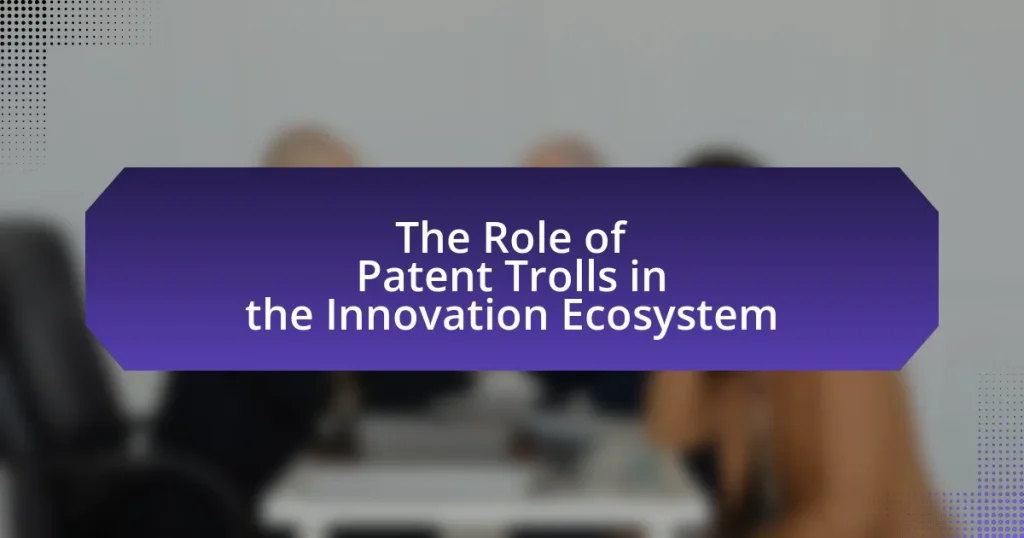The Patent Cooperation Treaty (PCT) is an international treaty established in 1970, administered by the World Intellectual Property Organization (WIPO), that simplifies the process of obtaining patent protection in multiple countries through a single application. The PCT allows inventors to file one international patent application recognized by over 150 contracting states, streamlining the application process and reducing associated costs. Key features of the PCT include an international search and preliminary examination, which assess patentability, and the ability for applicants to enter national phases in designated countries within a specified timeframe. The article explores the PCT’s benefits, limitations, and the roles of various entities involved in the process, providing practical tips for applicants to enhance their chances of successful patent protection.
--The-Patent-Cooperation-Treaty-(PCT)-is-an-international-1.webp)
What is the Patent Cooperation Treaty (PCT)?
The Patent Cooperation Treaty (PCT) is an international treaty that facilitates the process of obtaining patent protection in multiple countries through a single application. Established in 1970 and administered by the World Intellectual Property Organization (WIPO), the PCT allows inventors to file one international patent application, which is then recognized by over 150 contracting states. This streamlines the patent application process, reducing costs and complexity for applicants seeking protection in multiple jurisdictions.
How does the PCT facilitate international patent protection?
The Patent Cooperation Treaty (PCT) facilitates international patent protection by providing a unified procedure for filing patent applications in multiple countries. This system allows inventors to submit a single international application, which is then recognized by all PCT contracting states, streamlining the process and reducing costs associated with filing separate applications in each country. As of October 2023, there are 156 contracting states, demonstrating the PCT’s broad acceptance and effectiveness in simplifying international patent protection.
What are the key features of the PCT process?
The key features of the PCT process include the ability to file a single international patent application that can provide protection in multiple countries, the establishment of an international search and preliminary examination to assess patentability, and the option for applicants to enter national phases in designated countries within a specified timeframe. The PCT system simplifies the process of obtaining patent rights internationally, allowing inventors to delay the costs associated with filing in individual jurisdictions while still securing their invention’s priority date. According to the World Intellectual Property Organization (WIPO), the PCT facilitates access to a broader market and enhances the efficiency of the patent application process.
How does the PCT differ from national patent applications?
The Patent Cooperation Treaty (PCT) differs from national patent applications primarily in its international scope and procedural framework. The PCT allows an inventor to file a single international patent application that can be recognized in multiple countries, whereas national patent applications are limited to protection within a specific country. The PCT process includes an international search and preliminary examination, which provides applicants with valuable insights into the patentability of their invention before entering national phases, thus streamlining the process and reducing costs associated with multiple filings. In contrast, national applications require separate filings, fees, and examinations in each jurisdiction, leading to increased complexity and potential duplication of efforts.
Why was the PCT established?
The Patent Cooperation Treaty (PCT) was established to streamline the process of obtaining international patent protection. It allows inventors to file a single patent application that can be recognized in multiple countries, thereby simplifying the procedure and reducing costs associated with filing separate applications in each jurisdiction. The PCT was created in 1970 under the auspices of the World Intellectual Property Organization (WIPO) to facilitate innovation and enhance the efficiency of the global patent system.
What challenges in patenting did the PCT aim to address?
The Patent Cooperation Treaty (PCT) aimed to address several challenges in the patenting process, primarily the complexity and cost associated with filing patents in multiple countries. The PCT simplifies the international patent application process by allowing inventors to file a single application that is recognized by multiple member countries, reducing the need for separate filings in each jurisdiction. This streamlined approach not only lowers costs but also extends the time available for applicants to assess the commercial viability of their inventions before committing to national patent applications. As of October 2023, the PCT has over 150 contracting states, demonstrating its widespread acceptance and effectiveness in facilitating international patent protection.
How has the PCT evolved since its inception?
The Patent Cooperation Treaty (PCT) has evolved significantly since its inception in 1970, primarily enhancing the international patent application process. Initially designed to streamline the filing of patents across multiple countries, the PCT has expanded its membership from 18 contracting states to 156 as of 2023, facilitating broader access to patent protection.
The introduction of the PCT System allowed inventors to file a single international application, which is then recognized by all member countries, reducing the complexity and cost associated with multiple national filings. Additionally, the PCT has undergone procedural improvements, such as the implementation of the ePCT system in 2010, which allows for online filing and management of applications, increasing efficiency and accessibility for applicants.
These developments reflect the PCT’s ongoing commitment to adapt to the needs of global innovation and intellectual property protection, making it a vital tool for inventors and businesses worldwide.

What are the main components of the PCT system?
The main components of the Patent Cooperation Treaty (PCT) system are the International Bureau, the receiving offices, the International Searching Authorities, and the International Preliminary Examining Authorities. The International Bureau, located in Geneva, administers the PCT and facilitates communication among the various entities involved. Receiving offices are responsible for accepting international patent applications from applicants. International Searching Authorities conduct searches to identify prior art relevant to the patentability of the invention. Lastly, International Preliminary Examining Authorities evaluate the application to provide a preliminary opinion on its patentability. These components work together to streamline the process of obtaining patent protection in multiple countries.
What are the roles of the International Bureau and national offices?
The International Bureau and national offices play crucial roles in the administration of the Patent Cooperation Treaty (PCT). The International Bureau, as the central authority, manages the PCT system, processes international patent applications, and facilitates communication between applicants and national offices. National offices, on the other hand, are responsible for examining patent applications within their jurisdictions, granting patents, and ensuring compliance with national laws. This division of responsibilities ensures a streamlined process for applicants seeking patent protection in multiple countries, enhancing the efficiency and effectiveness of the global patent system.
How does the International Bureau support PCT applicants?
The International Bureau supports PCT applicants by providing administrative services, guidance, and resources throughout the international patent application process. This includes facilitating the filing of applications, conducting international searches, and issuing international preliminary examinations. The Bureau also offers tools such as the PCT Applicant’s Guide and online services to assist applicants in navigating the complexities of the PCT system, ensuring compliance with procedural requirements and enhancing the efficiency of the application process.
What responsibilities do national patent offices have under the PCT?
National patent offices have several key responsibilities under the Patent Cooperation Treaty (PCT). They are tasked with processing international patent applications, conducting preliminary examinations, and granting patents based on the results of these applications. Specifically, national patent offices must ensure that applications comply with their national laws and regulations, provide a search report, and issue a written opinion on the patentability of the invention. These responsibilities are crucial for maintaining the integrity and efficiency of the international patent system, as outlined in the PCT regulations.
What is the PCT application process?
The PCT application process allows inventors to seek patent protection internationally through a single application. This process begins with the filing of an international application with a national or regional patent office, which then serves as the receiving office. Following this, the application undergoes an international search to identify prior art, and a written opinion on patentability is provided. Subsequently, the applicant can enter the national phase in designated countries within 30 or 31 months from the priority date, depending on the jurisdiction. The PCT system simplifies the process of obtaining patents in multiple countries, as it streamlines the initial filing and search stages, ultimately facilitating international patent protection.
What steps are involved in filing a PCT application?
Filing a PCT application involves several key steps: first, prepare a patent application that meets the requirements of the PCT, including a description, claims, abstract, and drawings if necessary. Next, file the application with a national or regional patent office or directly with the International Bureau of WIPO. After filing, the application undergoes an international search conducted by an International Searching Authority to identify prior art. Subsequently, a written opinion on the patentability of the invention is issued. Finally, within 30 months from the priority date, the applicant must enter the national phase in the desired countries by filing translations and paying necessary fees. These steps ensure compliance with the PCT framework, facilitating international patent protection.
How does the international search and preliminary examination work?
The international search and preliminary examination under the Patent Cooperation Treaty (PCT) involves a systematic evaluation of a patent application to determine its novelty, inventive step, and industrial applicability. During the international search, an International Searching Authority (ISA) reviews the application and relevant prior art to produce an International Search Report (ISR) and a written opinion on the patentability of the invention. This process typically occurs within 16 months from the priority date.
Following the search, the preliminary examination is optional and conducted by an International Preliminary Examining Authority (IPEA) if requested by the applicant. This examination further assesses the application based on the ISR and any amendments made by the applicant, ultimately resulting in a written opinion on the patentability. The preliminary examination must be completed within 28 months from the priority date, providing the applicant with a clearer understanding of the potential for patent grant before entering national phases.
-in-3.webp)
What are the benefits of using the PCT?
The benefits of using the Patent Cooperation Treaty (PCT) include streamlined international patent protection, cost-effectiveness, and extended time for decision-making. The PCT allows inventors to file a single international patent application that is recognized by multiple countries, simplifying the process and reducing the need for multiple filings. This approach can save significant costs associated with individual national applications. Additionally, the PCT provides a preliminary examination of the invention, offering insights into its patentability before the applicant commits to national phase entries, thus extending the time frame for securing patent rights.
How does the PCT simplify the patenting process for inventors?
The Patent Cooperation Treaty (PCT) simplifies the patenting process for inventors by allowing them to file a single international patent application that is recognized by multiple countries. This streamlined approach reduces the complexity and cost associated with filing separate applications in each country, as it provides a unified procedure for seeking patent protection globally. The PCT process includes an international search and preliminary examination, which helps inventors assess the patentability of their inventions before entering national phases in individual countries, thereby saving time and resources.
What time and cost savings can be achieved through the PCT?
The Patent Cooperation Treaty (PCT) can achieve significant time and cost savings for applicants seeking international patent protection. By allowing a single application to be filed in multiple countries, the PCT reduces the need for separate filings in each jurisdiction, which can save applicants thousands of dollars in filing fees and legal costs. Additionally, the PCT process streamlines the examination phase, providing a preliminary international search report and written opinion, which can expedite the decision-making process for applicants and reduce the overall time to secure patent rights. This efficiency is evidenced by the fact that PCT applicants can defer national phase entry fees for up to 30 months, allowing for better financial planning and resource allocation.
How does the PCT enhance the chances of patent approval?
The Patent Cooperation Treaty (PCT) enhances the chances of patent approval by providing a streamlined international application process that allows inventors to seek patent protection in multiple countries simultaneously. This process includes an international search and preliminary examination, which helps identify potential issues with patentability early on, allowing applicants to address these concerns before entering national phases. According to the World Intellectual Property Organization (WIPO), the PCT system facilitates access to a broader market and increases the likelihood of securing patents by reducing the complexity and costs associated with filing in multiple jurisdictions.
What are the limitations of the PCT?
The limitations of the Patent Cooperation Treaty (PCT) include its inability to grant patents, the requirement for national phase entry, and varying examination standards across member countries. The PCT facilitates the filing of international patent applications but does not itself issue patents; applicants must still pursue patent protection in individual countries. Additionally, after the initial PCT application process, applicants must enter the national phase within 30 or 31 months, depending on the jurisdiction, which can lead to additional costs and complexities. Furthermore, each country has its own patent examination criteria, which can result in inconsistent outcomes for the same invention across different jurisdictions.
What are the common misconceptions about the PCT?
Common misconceptions about the Patent Cooperation Treaty (PCT) include the belief that it grants a global patent, that it simplifies the patent process entirely, and that it guarantees patent protection in all member countries. The PCT does not provide a single patent but facilitates the filing process in multiple jurisdictions, requiring separate national or regional patents for enforcement. Additionally, while the PCT streamlines the initial application process, applicants must still navigate individual national laws and requirements, which can vary significantly. Lastly, the PCT does not automatically confer patent rights; it merely allows for a unified application process, leaving the final decision on patentability to the respective national patent offices.
How does the PCT interact with national patent laws?
The Patent Cooperation Treaty (PCT) facilitates international patent protection by providing a unified procedure for filing patent applications in multiple countries, while national patent laws govern the granting and enforcement of patents within individual countries. The PCT allows applicants to file a single international application, which is then examined and published, but the ultimate decision on patentability rests with the national patent offices, which apply their respective laws to grant or reject patents based on the PCT application. This interaction ensures that while the PCT streamlines the initial filing process, national laws determine the final outcome of patent rights in each jurisdiction.
What practical tips should applicants consider when using the PCT?
Applicants should ensure they conduct thorough prior art searches before filing under the PCT to assess the novelty of their invention. This step is crucial as it helps applicants understand the existing landscape of patents and can inform their strategy for patentability. Additionally, applicants should carefully select the countries in which they wish to pursue patent protection, as the PCT allows for a streamlined process in multiple jurisdictions, but costs can vary significantly. Furthermore, timely submission of the international application is essential, as delays can affect the priority date and overall patent strategy. Lastly, engaging with a qualified patent attorney can provide valuable insights into the complexities of the PCT process, ensuring compliance with all requirements and maximizing the chances of successful patent protection.
How can applicants prepare an effective PCT application?
Applicants can prepare an effective PCT application by ensuring that their application is comprehensive, clear, and adheres to the specific requirements set by the PCT system. This includes conducting thorough prior art searches to assess the novelty of the invention, drafting detailed claims that clearly define the scope of protection sought, and providing a complete description of the invention that enables a person skilled in the art to understand and replicate it.
Additionally, applicants should pay attention to the formal requirements, such as proper formatting and submission of necessary documents, including the international application form and any required fees. According to the World Intellectual Property Organization (WIPO), a well-prepared application can significantly enhance the chances of successful patent protection across multiple jurisdictions.
What resources are available for PCT applicants?
PCT applicants have access to several resources, including the World Intellectual Property Organization (WIPO) website, which provides comprehensive guidelines, forms, and FAQs related to the PCT process. Additionally, national patent offices offer specific information and support for applicants in their jurisdictions. WIPO also provides online tools such as the PCT e-filing system and the PCT Applicant’s Guide, which detail procedural steps and requirements. These resources are designed to assist applicants in navigating the complexities of international patent protection effectively.
The question “
” does not provide a specific inquiry related to the Patent Cooperation Treaty (PCT) and therefore cannot be answered.



